
TowParts.com: Your One-Stop Shop for Reliable Trailer Parts
When you rely on your trailer—whether it’s for work, travel, or recreation—you need to know
If you rely on your trailer—whether for work, travel, or recreation—its performance and safety are paramount. One area that many trailer owners consider improving is the axle capacity. Upgrading your trailer’s axle capacity can seem like a straightforward way to increase payload and improve handling under heavier loads. But before you dive in, it’s crucial to understand the factors that influence a successful, legal, and long-lasting upgrade.
In this comprehensive guide, we’ll walk you through everything you need to consider, from ensuring your frame and suspension can handle the added stress, to selecting the right components, and staying compliant with local regulations. By the end, you’ll be ready to make informed decisions that keep your trailer safe, efficient, and ready for whatever the road throws at it.
Over time, your trailer’s hauling needs may change. Maybe you’ve started carrying heavier construction equipment, upgraded to a larger side-by-side ATV, or need extra capacity for commercial deliveries. Increasing your axle capacity can help:
• Handle Heavier Loads: A stronger axle means more payload capability.
• Improve Stability and Handling: Properly matched components can reduce sway and improve control.
• Extend Your Trailer’s Lifespan: Robust, quality parts decrease wear and tear on essential systems.
However, these benefits only come when the upgrade is done correctly. Simply slapping on a heavier-duty axle without considering your trailer’s overall structure, suspension, tires, brakes, and frame can lead to potential hazards and costly repairs down the line.
Before you start ordering parts, review your trailer’s existing specifications. Identify the Gross Vehicle Weight Rating (GVWR), the current axle rating, and ensure you have the manufacturer’s guidelines on file. If you’re unsure, check your trailer’s documentation or consult a professional. These numbers set the baseline for your upgrade.
• Axle Capacity: Determine your current axle rating. For example, if your trailer currently has a 3,500 lb axle and you want more capacity, you might consider a 6,000 lb Trailer Electric Brake Axle Service Kit to handle heavier loads.
• Frame Integrity: Upgrading the axle won’t matter if your frame can’t support more weight. Ensure your trailer’s frame and coupler are rated for the increased load.
When upgrading your trailer’s axle capacity, remember that local regulations and safety standards aren’t optional. Towing an overloaded or improperly modified trailer can lead to legal repercussions and serious safety risks. Consider:
• Re-certification Requirements: Some regions may require official re-certification of your trailer’s new GVWR. Check local laws to see if an inspection or updated documentation is needed after your upgrade.
• Staying Within GVWR: Upgrading the axle doesn’t automatically increase the GVWR of the trailer. The weakest link in the chain—be it your frame, suspension, or coupler—still determines your maximum safe load.
• Brake Requirements: Heavier loads often require more robust braking systems. For heavier capacities, consider upgrading to quality Trailer Brakes designed to stop heavier weights safely.
A trailer’s axle doesn’t operate in isolation. Its performance and longevity depend on a network of components working in harmony. Before increasing axle capacity, evaluate these key areas:
1. Frame and Suspension:
Your axle upgrade puts more stress on the trailer’s frame and suspension. If the frame isn’t built for heavier loads, it may bend or crack over time. Similarly, leaf springs or torsion suspension must be rated for the new load. If necessary, upgrade your springs, hangers, and shackles to match the new axle’s rating.
2. Tires and Wheels:
Tires are often overlooked, but they carry the entire load. Are your current tires rated for the increased weight? Upgrading axle capacity often means choosing heavier-duty tires and wheels. Make sure to check load ratings and bolt patterns. For instance, if you upgrade to a kit with a 5 on 4.5 bolt pattern like the 3,500 lb Trailer Electric Brake Axle Service Kit – 5 on 4.5, ensure your wheels are compatible.
3. Brakes, Bearings, and Hub Drums:
More load means you need stronger stopping power. If you’re adding capacity, consider upgrading to a kit that includes robust hubs and brake assemblies. Check out Trailer Hub and Drums designed for heavier loads and ensure you have the right Axle Bearing Kits to handle the added stress.
If you’re upgrading from an idler axle to one with brakes, consider a 3,500 lb Trailer Electric Brake Axle Service Kit – 5 on 5 to ensure improved stopping power aligned with your new capacity.
Not all trailer parts are created equal. When dealing with structural components like axles, brakes, and bearings, quality matters. Inferior components risk catastrophic failure, putting you and others at risk.
At TowParts.com, we’re committed to quality. We source parts that meet or exceed industry standards, and many of our products carry certifications such as:
• CSA (Canadian Standards Association): www.csagroup.org
• SAE (Society of Automotive Engineers): www.sae.org
• QAI (Quality Auditing Institute): www.qai.org
These certifications indicate that the Trailer Parts we offer have undergone rigorous testing for performance, durability, and safety. When you invest in certified axles, bearings, and brakes, you gain confidence that your upgraded trailer will handle the increased load for the long haul.
While some trailer owners are comfortable doing their own mechanical work, upgrading axle capacity is a job where professional guidance can be invaluable. Experts can:
• Assess your trailer’s frame and structure for compatibility with heavier axles.
• Recommend the correct parts and kits to match your towing requirements.
• Perform proper installation and testing, ensuring everything works together seamlessly.
If you’re new to these kinds of modifications, reaching out to a professional can save time, money, and potential safety issues down the road.
Upgrading your axle capacity isn’t a “set it and forget it” scenario. Increased capacity means you must maintain that higher standard of care. Some maintenance considerations include:
• Regular Inspections: Keep an eye on bearings, seals, and suspension components to catch wear early. A service kit like our 2,000 lb Idler Trailer Axle Service Kit – 5 on 4.5 or a heavier-duty kit ensures you have the right components to start with, but you still need to monitor their condition over time.
• Proper Lubrication: Higher loads generate more friction and heat. Make sure bearings are well-greased with quality products that can handle the added stress.
• Brake Adjustments: If you’ve added or upgraded brakes, follow the manufacturer’s guidelines for brake shoe adjustments and pad or magnet replacements.
Cost is another factor in upgrading your trailer’s axle capacity. Beyond the axle itself, you may need new tires, springs, brakes, or even frame reinforcement. Plan a budget that accounts for:
• Core Components: The axle upgrade kit, such as a 6,000 lb Trailer Electric Brake Axle Service Kit for heavier loads, forms the project’s foundation.
• Supporting Upgrades: Stronger tires, better hubs and drums, or upgraded suspension parts all add to the cost.
• Labor Costs: If you’re not doing the work yourself, factor in professional installation fees.
Investing in quality parts now can save you money later by preventing premature failures, accidents, and costly downtime.
For a broader perspective on making smart trailer part purchases, check out our guide on avoiding common pitfalls when buying Trailer Parts. Learning from the experiences of others helps you sidestep common mistakes, ensuring your axle capacity upgrade is both safe and cost-effective.
Upgrading your trailer axle capacity can open doors to new towing opportunities and greater hauling efficiency. But it’s not a decision to be taken lightly. Each element of your trailer—from the frame and suspension to brakes, tires, and bearings—must work in harmony to handle increased weight safely.
By confirming your trailer’s current ratings, understanding legal obligations, selecting certified, high-quality parts, and considering long-term maintenance, you set yourself up for success. With careful planning and possibly professional assistance, your upgraded trailer can deliver the performance and reliability you need for years to come.
When you’re ready to explore the right components, TowParts.com is here with a vast range of axles, bearings, brakes, and more—backed by industry certifications and a commitment to helping you tow smarter and safer.
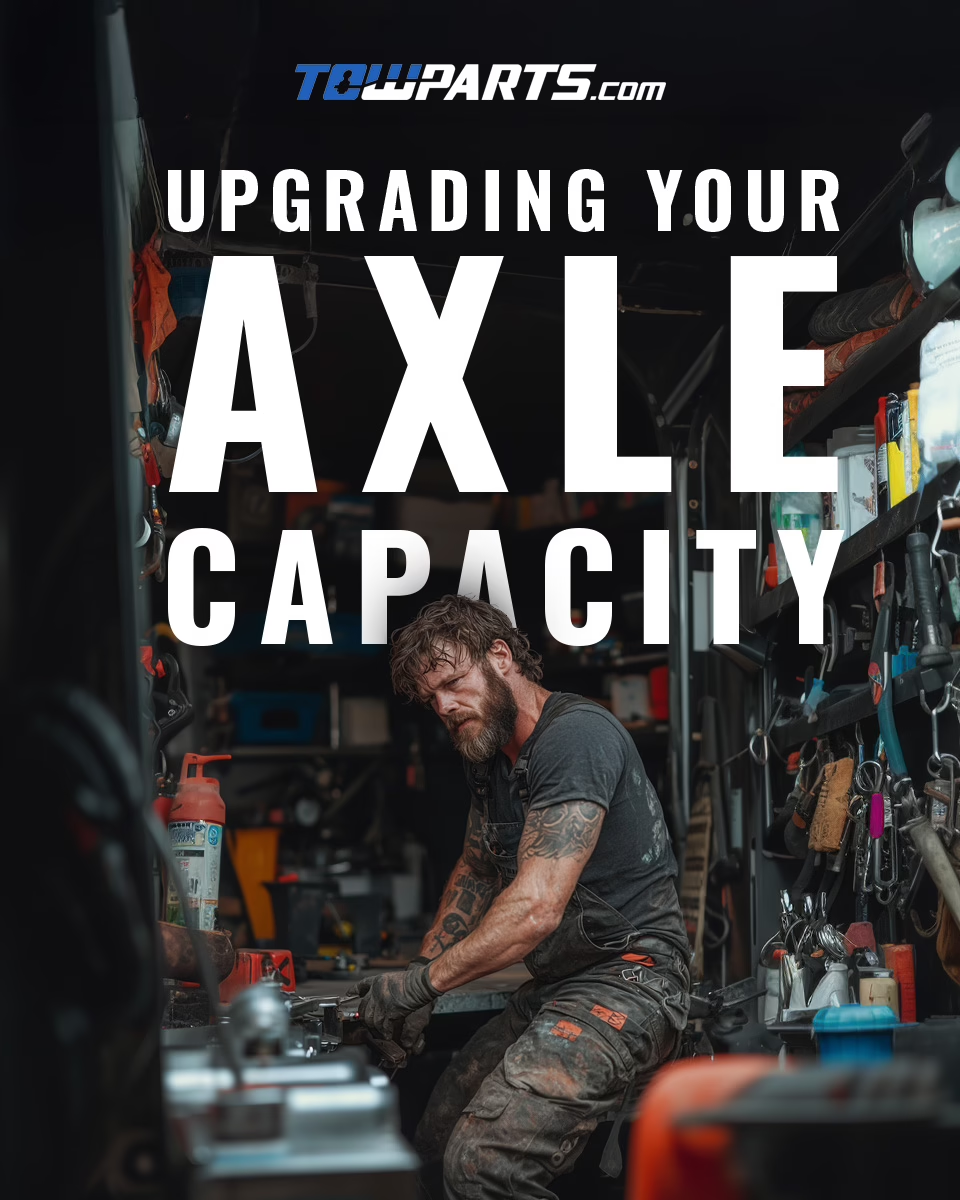

When you rely on your trailer—whether it’s for work, travel, or recreation—you need to know
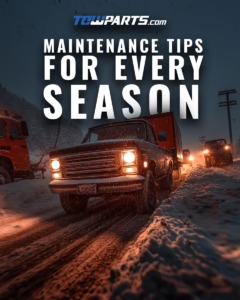
TRAILER MAINTENANCE: Weather can have a significant impact on your trailer’s performance and longevity. From
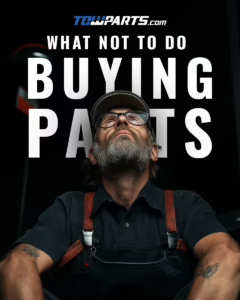
Don’t let simple mistakes compromise your trailer’s safety or performance. By choosing high-quality parts, verifying

Your trailer’s performance, safety, and longevity depend on high-quality trailer axles. Understanding their purpose, recognizing
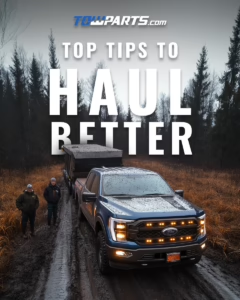
Ready to haul your trailer with more confidence and control? From proper weight distribution to
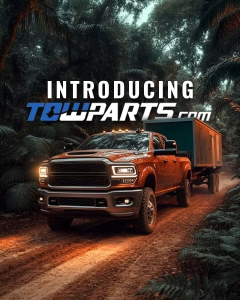
Since launching on February 3, 2025, TowParts.com has quickly become the go-to destination for premium